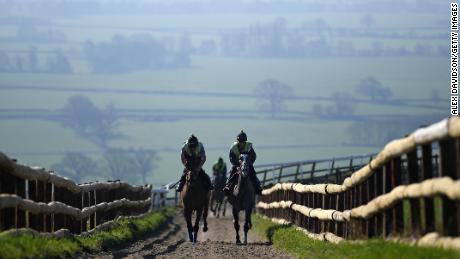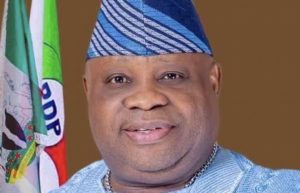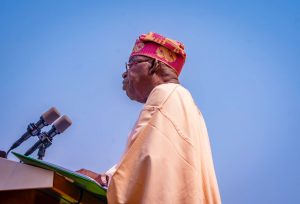A day in the life of a top racing yard

Tall, dark and handsome, his coat glistening in the unusually warm February sun, the French-bred bay gelding pricks up his ears as Clifford Baker, the head lad, tickles his soft nose and hands him his favorite vegetable.”He just is special, he’s won some big races,” Baker told CNN Sport at the yard in Ditcheat, a small village in the rolling hills of Somerset, England. “And you’re friendly, aren’t you? And you like carrots.”Visit CNN.com/Sport for more news, features and videoStar-studded stableThe seven-year-old Clan Des Obeaux, who is partly owned by former Manchester United manager Alex Ferguson, is the undisputed star of the racing yard owned by Paul Nicholls, the 10-time champion jumps trainer.With more than 3,000 wins, including four Cheltenham Gold Cup victories and one Grand National, Manor Farm is one of the most successful stables in National Hunt racing. Green boards with gold lettering adorn each box, listing the achievements of the inhabitants or famous former stars. The stable’s biggest names have been 1999 Cheltenham Gold Cup winner See More Business, 2007 and 2009 Gold Cup champion Kauto Star, next door neighbor Denman, who won the showpiece in 2008, and 2012 Grand National winner Neptune Collonges. Nicholls, a former jumps jockey, began the yard in 1991 with eight horses. The operation now consists of two yards in Ditcheat, where up to 50 staff train and look after 128 racehorses.As head lad of 23 years, Baker has played a crucial role in its success. He lives next to Manor Farm, and is always the first to arrive and the last to leave.READ: How to own a racehorse without breaking the bankREAD: The young Qatari royal shaking up the sport of kingsA day in the lifeHere’s an average day at Manor Farm Stables from Baker’s perspective: 5:30 a.m.: “I come in to give all the horses their breakfast, and make sure they are all OK. I do that on my own, most head lads would do that. Their feed is basically a bowl of cubes, which contains everything they need.”6:30-6:45 a.m.: “After I feed them, all the staff get in. Everyone mucks out, usually five or six horses each, and gives them fresh water.”When everything is mucked out, me, Paul (Nicholls) and Harry Derham (assistant trainer) will have sorted what we call the work list, which will have every horse on it, and then decide what exercise that horse is going to do for that day. It can be a variation of half a dozen different things that we do.”If it’s a race day, it will all depend on where you are going and what you are doing. They get fed the same, first thing in the morning, and they normally go on the walker for an hour in the morning.”We can leave anytime between 5 a.m. in the morning, if you are going up north, or 9 a.m. if you are local. But basically, if they are racing, their morning will be to have breakfast and then a walk, that’s the aim. And then they go on the lorry with their member of staff that looks after them. Each person looks after about five horses.” 8:00 a.m.: “The first lot go out, for just over an hour. This can be galloping, cantering, schooling, or going for a walk. They come back in, and then we all have a short break, 15 minutes or so, for our own breakfast.”9:45 a.m.: “The second lot will ride out.”11:15 a.m.: “The third lot will ride out.”Midday: “The horses will get fed again, the same thing they had in the morning. And they will have had a basket of hay in the morning as well.”A vet will come in once or twice a week, and we have physiotherapists coming in two or three times a week. They will give them a massage, or tweak anything that needs tweaking, just like they would with us humans.” 1-2:45 p.m.: “We stop for lunch, everybody goes home and the horses relax and eat their lunch.”2:45 p.m.: “The staff come back from their lunch break, and then it’s mucking out again, grooming, put some of the horses on the walker, which will be about an hour.”5 p.m.: “The horses have another feed, their last thing that night. They get two bowls, plus a few extras, a bit of chaff and a supplement.”6 p.m.: “They are all tucked up, ready to go to sleep.”READ: Racing’s top global powerhouses’Motivation and determination’On this sunny morning, Nicholls is presenting Clan Des Obeaux and his other Cheltenham entries to dozens of British media who have traveled to the yard to see the horses in their natural surroundings.Having won the King George VI Chase at Kempton Park on Boxing Day, beating fellow Gold Cup contenders Thistlecrack and 2018 winner Native River, Nicholls believes Clan can secure him a record-tying fifth Gold Cup.”He was still learning about the job last year, but now we are where we want to be,” said the 56-year-old Nicholls. “He is a more experienced horse who has matured and has done the talking himself on his last two runs.”With 43 wins at the prestigious Cheltenham Festival, jump racing’s blue riband event, Nicholls knows what he is talking about. “Kauto Star won his first Gold Cup when he was seven and so Clan Des Obeaux is the right age for the race,” he said. “With some luck in running, fingers crossed he can run a big race.”Life in a racing yard is relentless, with no shortcuts, but Baker revealed the secret behind Nicholls’ phenomenal success as a trainer.”It is motivation and determination to do well,” he said. “We are obviously good at what we do. We get horses very fit, they jump well, and we train good horses. “It’s a lot of things pulled together. You’ve got to have the owners to buy the horses and then you’ve got to train them.”







